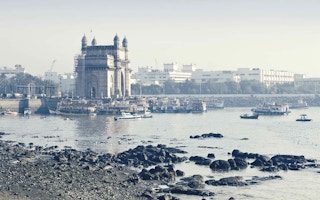The building blocks of a city extend from the trains we catch to work, to the healthcare services we use, to the homes we live in. All are impacted by climate change.
In fact, the vast majority of cities across the globe are already feeling the impacts of climate change. New CDP research out today reports that 71 per cent are experiencing or anticipating floods, 61 per cent extreme heat, and 36 per cent droughts.
Urgent action is needed and the stakes are high: by 2050, 70 per cent of the world’s population will live in cities, eight times as many city residents will be exposed to high temperatures, and 800 million more people could be at risk from the impacts of rising seas and storm surges.
So how do cities best prepare to overcome the obstacles they face?
Flooding
Flooding is the most widely cited physical climate hazard faced by cities, with coastal cities like Buenos Aires and The Hague at particularly high risk.
To counter the threat, Buenos Aires is developing a network of hydro-meteorological sensors which monitor rainfall and pipe capacity and communicate in real time with a central control centre. This allows the city to rapidly coordinate its response to flooding with other government agencies such as the Civil Defence, police and health services.
The Hague has mapped its vulnerability to coastal flooding with flood modelling as part of the 100 Resilient Cities programme. 6,500 square kilometres of the Netherland’s coastline has been reclaimed from the sea, so coastal flooding is a risk the city has been adapting to for many years.
Key to their approach is the introduction of a ‘sand engine’, which deposits and replenishes sand on an artificial peninsula forming a physical barrier against the rising seas.
“
New CDP research out today reports that 71 per cent are experiencing or anticipating floods, 61 per cent extreme heat, and 36 per cent droughts.
Drought and extreme heat
Despite its reputation as a rain-prone city, London sits in the region with the lowest rainfall in the UK and is vulnerable to drought as climate impacts worsen. By 2050, London could see a daily water deficit of 520 million litres.
In a bid to build resilience, the city is taking action with a water security strategy aimed at reducing pressure on supply, while preparing for future disruption. London’s strategy includes:
- Identifying new sources of supply
- Reducing leakage from the distribution network
- Installing smart meters and testing demand reduction incentives
- Improving efficiency in the home and workplace
- Reviewing drought emergency plans
Lagos, meanwhile, suffers from coastal flooding, largely due to land erosion caused by lashing waves of the Atlantic. This has been happening for around 100 years, and the city is seeing the sea edging closer to its financial centre, Victoria Island. Adapting to this, and protecting vital infrastructure and citizens, the city has embarked on the ambitious “Great Wall of Lagos” project. When complete, the wall of 100,000 concrete blocks will be over 8km long, providing a protective barrier for new development, Eko Atlantic, and Victoria Island.
Need for vulnerability assessments
These actions show that solutions to climate impacts are possible. However, our Cities at Risk report found that over half (54 per cent) of cities reporting to CDP have not yet carried out vulnerability assessments—a crucial first step in understanding risks.
This is particularly alarming because those cities which have carried out assessments are reporting six times as many adaptation measures, revealing the extent to which assessment can spur action.
The example of Vancouver demonstrates this, with the city reporting hazards such as coastal flooding, drought, and heat waves. To adapt to the latter, the city is mapping vulnerable populations to heat, canopy cover and air and surface temperature to identify locations most in need of improved infrastructure. And they’ve made advances here, with the city piloting cooling stations outside social housing units and conducting public education activities to raise awareness of this work.
The rallying cry from the streets is for urgent climate action, and it’s coming from citizens in their millions. From flooding to forest fires, the impacts of climate change are already being felt across the world’s biggest cities.
But by investing in the right infrastructure and services, they can improve the lives of their citizens and build resilience against climate change.
Kyra Appleby is global director, Cities, States and Regions at CDP. This story was published with permission from Thomson Reuters Foundation, the charitable arm of Thomson Reuters that covers humanitarian news, women’s and LGBT+ rights, human trafficking, property rights, and climate change. Visit http://news.trust.org.


















